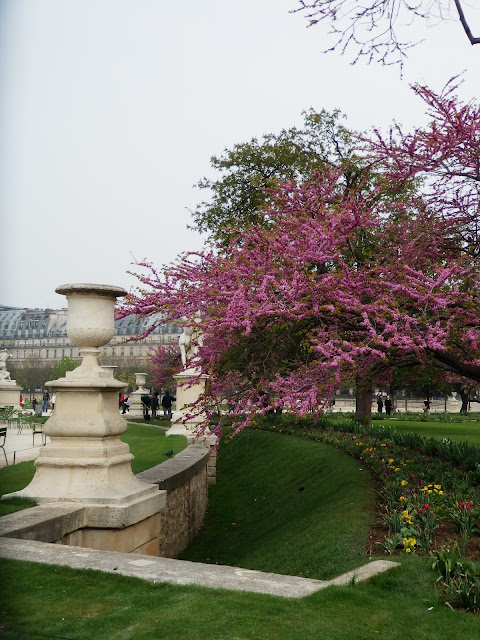There is a lemon cake thats rather divine. It's made from one whole lemon pulverised in the food processor, and provided you remember to include all of the recommended sugar, makes for a very nice cake. Provided you remember the sugar.
Growing up my mother would always adapt recipes as she baked. Usually this entailed halving the sugar. With the Lemon Meringue Pie this entailed cutting down the sugar to one third in addition to increasing the amount of lemon juice. With cakes, muffins, brownies... the sugar was always reduced, and it rarely had much of an impact.
Its the way I've been brought up. Usually when I'm baking I try to resist that, following the recipe to a tee, only altering the other ingredients included around it. Except when it comes to cakes. For some reason, it feels illogical that the standard cake recipe contains an entire cup of sugar. Surely it's not all necessary.
Turn out, in the whole lemon cake it really is.
Being healthy - as much as one can when planning to eat cake, I cut down on the amount of sugar. It took a very sweet friend to pull a funny face (when she thought I wasn't looking) for that decision to be reversed ever after.
So, here's the proper recipe:
Try not to eat too much of it.
Growing up my mother would always adapt recipes as she baked. Usually this entailed halving the sugar. With the Lemon Meringue Pie this entailed cutting down the sugar to one third in addition to increasing the amount of lemon juice. With cakes, muffins, brownies... the sugar was always reduced, and it rarely had much of an impact.
Its the way I've been brought up. Usually when I'm baking I try to resist that, following the recipe to a tee, only altering the other ingredients included around it. Except when it comes to cakes. For some reason, it feels illogical that the standard cake recipe contains an entire cup of sugar. Surely it's not all necessary.
Turn out, in the whole lemon cake it really is.
Being healthy - as much as one can when planning to eat cake, I cut down on the amount of sugar. It took a very sweet friend to pull a funny face (when she thought I wasn't looking) for that decision to be reversed ever after.
So, here's the proper recipe:
For the cake:
1 whole orange or Lemon, well washed
1 cup sugar
3 large eggs
12 Tablespoons unsalted butter, melted (180g because no one measures that much butter in tbsps)
1 1/2 cups all-purpose flour
2 1/4 teaspoons baking powder (if you don't have plain flour and baking powder just use self raising flour instead and omit the baking powder quantity: It works just as well)
3/4 teaspoon kosher salt
1 Tablespoon poppy seeds (optional)
for the glaze:
juice of one lime/lemon
1 whole orange or Lemon, well washed
1 cup sugar
3 large eggs
12 Tablespoons unsalted butter, melted (180g because no one measures that much butter in tbsps)
1 1/2 cups all-purpose flour
2 1/4 teaspoons baking powder (if you don't have plain flour and baking powder just use self raising flour instead and omit the baking powder quantity: It works just as well)
3/4 teaspoon kosher salt
1 Tablespoon poppy seeds (optional)
for the glaze:
juice of one lime/lemon
2+ tbsp of sugar.
Position a rack in the centre of your oven. Preheat the oven to 180 degrees Celsius.
Use a pretty shaped silicone mould or grease an ordinary cake mould.Position a rack in the centre of your oven. Preheat the oven to 180 degrees Celsius.
·
Using a sharp knife, remove the little green
stem from the orange skin. Cut the orange into 8 pieces.
·
In the bowl of a food processor fitted with the
metal blade, pulse the orange pieces (skin and all!) and 1/2 cup of the sugar
until puréed, scraping down the sides of the bowl as needed, so that no large
orange skin pieces remain.
·
In a large mixing bowl, whisk together the eggs
and the remaining 1/2 cup sugar until smooth.
·
Stir in the orange pulp. whisk in the melted
butter to combine.
·
In a separate bowl, whisk together the flour,
baking powder, salt, and poppy seeds to combine.
·
Sprinkle over the orange mixture and, using a
rubber spatula, gently fold until just combined.
·
Pour the batter into the prepared loaf pan.
·
Bake for 50 to 60 minutes, rotating the pan
halfway through baking.
·
The cake is done when a wooden skewer inserted
into the centre comes out clean.
· Immediately it is out of the oven drizzle the hot lemon syrup all over the cake.
· When the cake has cooled unmould.
· To make the lemon syrup boil together the lemon juice and sugar until the sugar has dissolved. (this is easily done in the microwave).
Try not to eat too much of it.





















